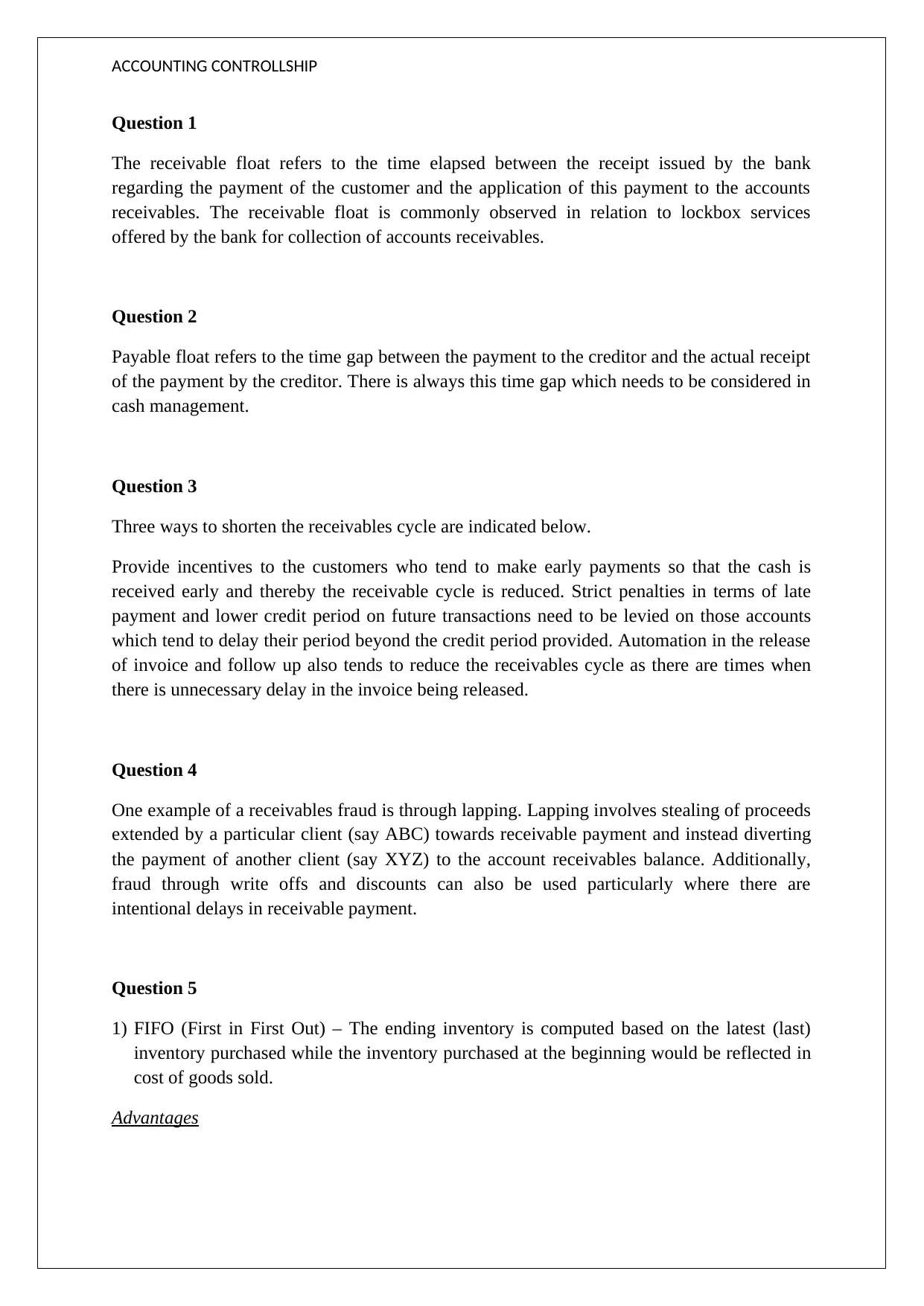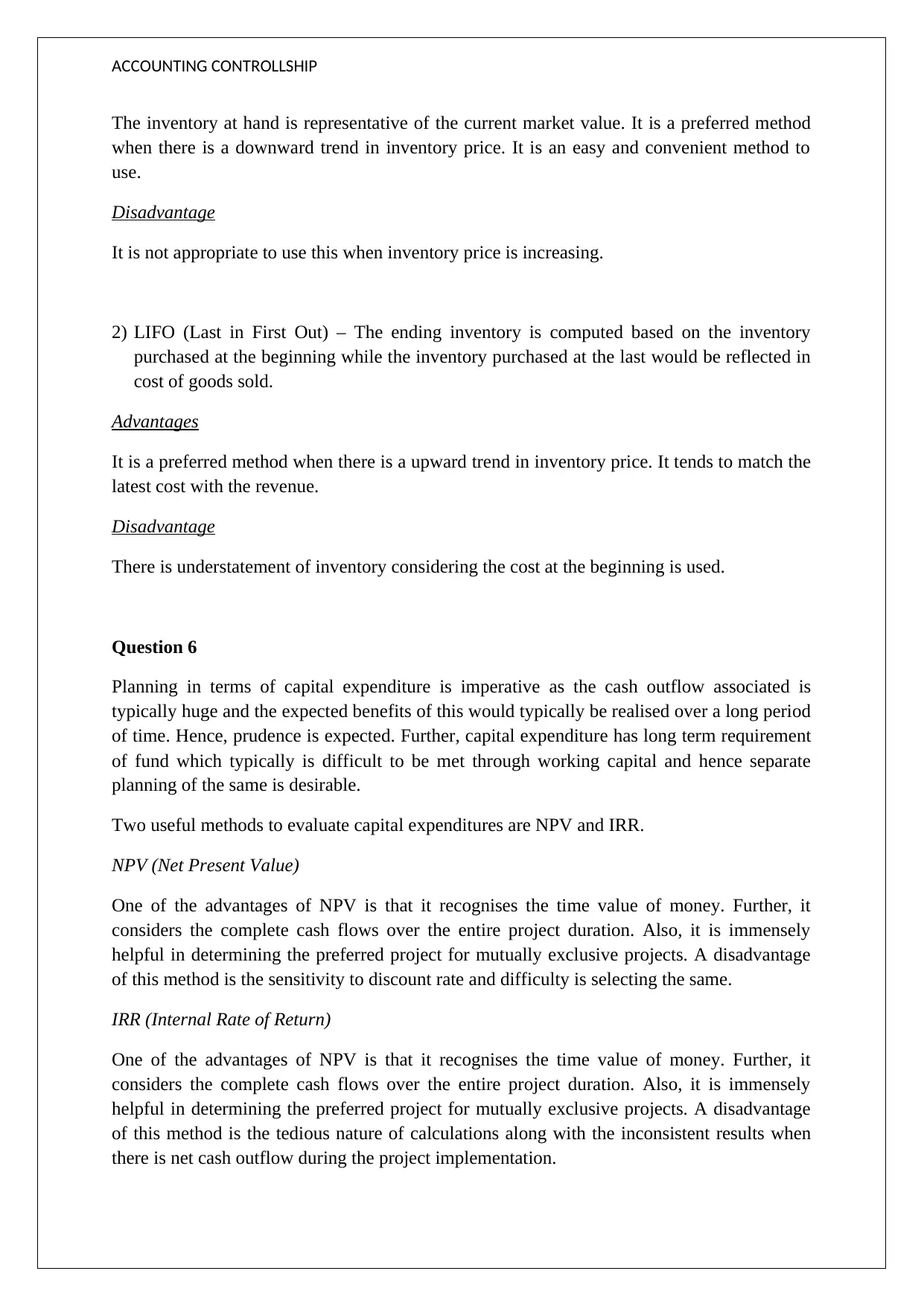Accounting and Finance Assignment - [University Name], Semester 1
VerifiedAdded on 2020/03/16
|3
|684
|52
Homework Assignment
AI Summary
This assignment solution covers key concepts in accounting and finance. It addresses the receivables cycle, including the concept of receivables float, methods to shorten the cycle, and examples of receivables fraud. The solution also discusses inventory valuation methods such as FIFO and LIFO, outlining their advantages and disadvantages. Furthermore, it delves into capital expenditure planning, highlighting the importance of this process and exploring the Net Present Value (NPV) and Internal Rate of Return (IRR) methods for evaluating capital projects. The assignment provides a comprehensive overview of these critical financial management topics, making it a valuable resource for students studying accounting and finance.
1 out of 3









![[object Object]](/_next/static/media/star-bottom.7253800d.svg)